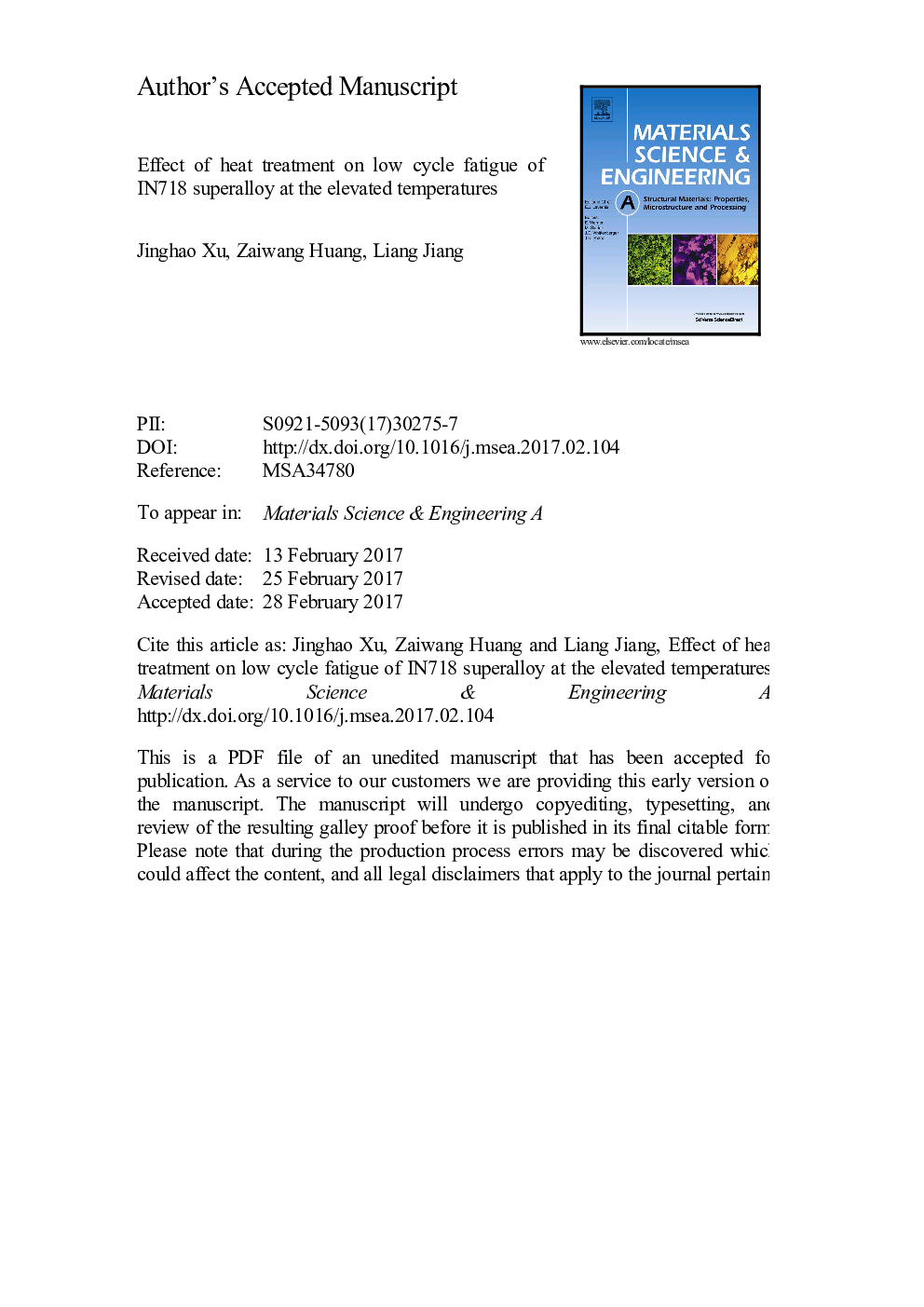| Article ID | Journal | Published Year | Pages | File Type |
|---|---|---|---|---|
| 5455941 | Materials Science and Engineering: A | 2017 | 28 Pages |
Abstract
Low cycle fatigue (LCF) performance of IN718 superalloy under different heat treatment conditions are investigated with controlled strain amplitudes from 0.6% to 1.0% at 350 °C and 650 °C. Standard heat treatment (ST) and delta-phase aging treatment (DA) are applied to produce two types of precipitation microstructures. Under the same strain amplitude and temperature, the fatigue lives of ST specimens exceed that of DA specimens. And strikingly, ST specimens exhibit cyclic softening behavior in contrast to cyclic hardening behavior for DA specimens. The different stress responses can be rationalized by the dislocation interaction mechanisms with the precipitates. For the ST specimens, the dislocation shearing of γâ²â² precipitates governs the microscopic deformation process, while the micrometer-sized δ phases are not shearable but act as the obstacles against dislocation slipping and lead to the cyclic hardening. Our TEM observations clearly show that recrystallization nucleation is prevalent in the DA specimens under 650 °C, which is interpreted by the high dislocation density induced by the δ phases. The results shed new lights on the fatigue microscopic deformation mechanisms of IN718 superalloy.
Keywords
Related Topics
Physical Sciences and Engineering
Materials Science
Materials Science (General)
Authors
Jinghao Xu, Zaiwang Huang, Liang Jiang,
